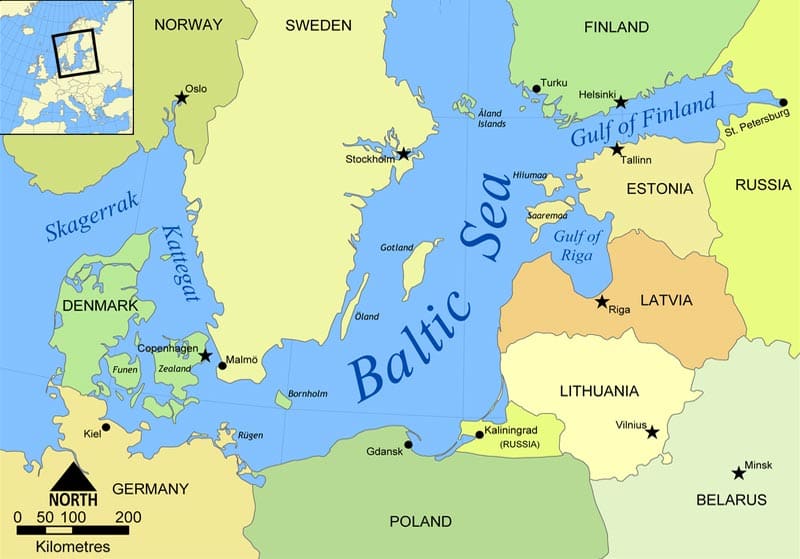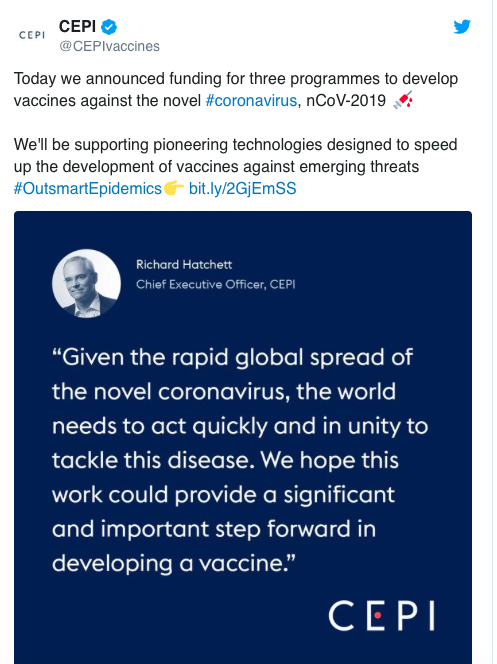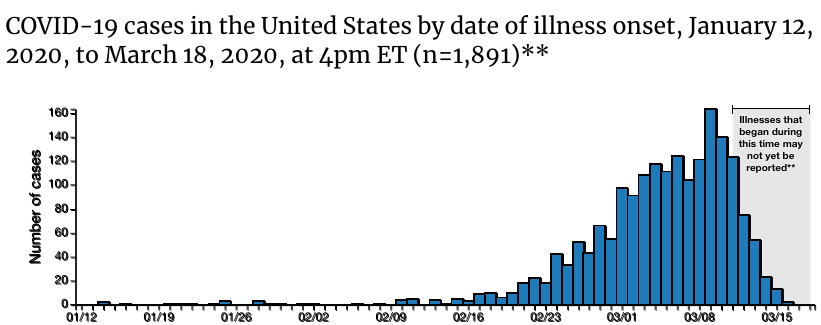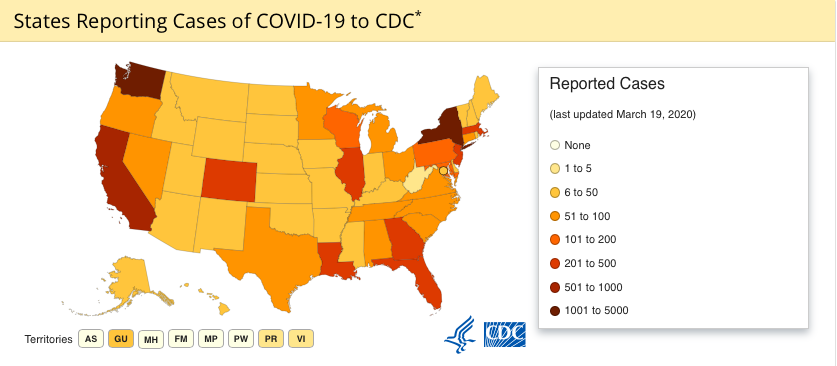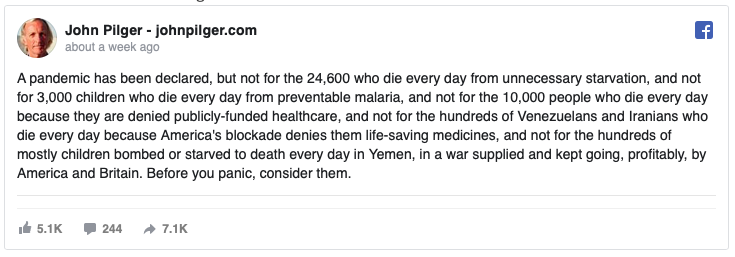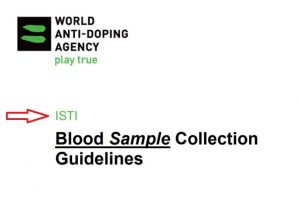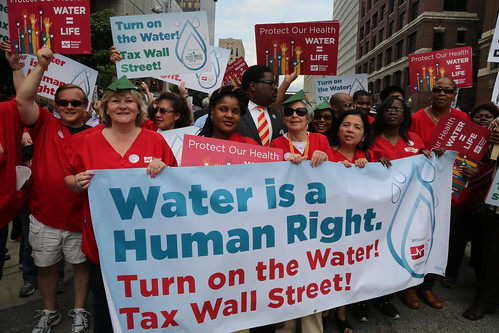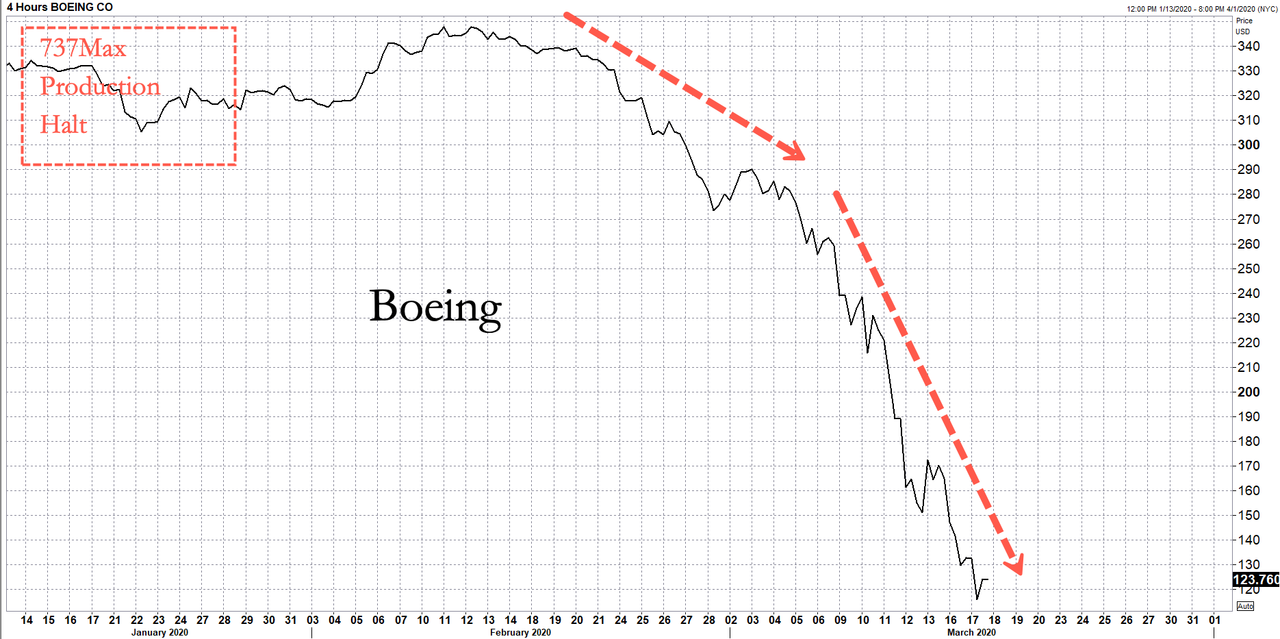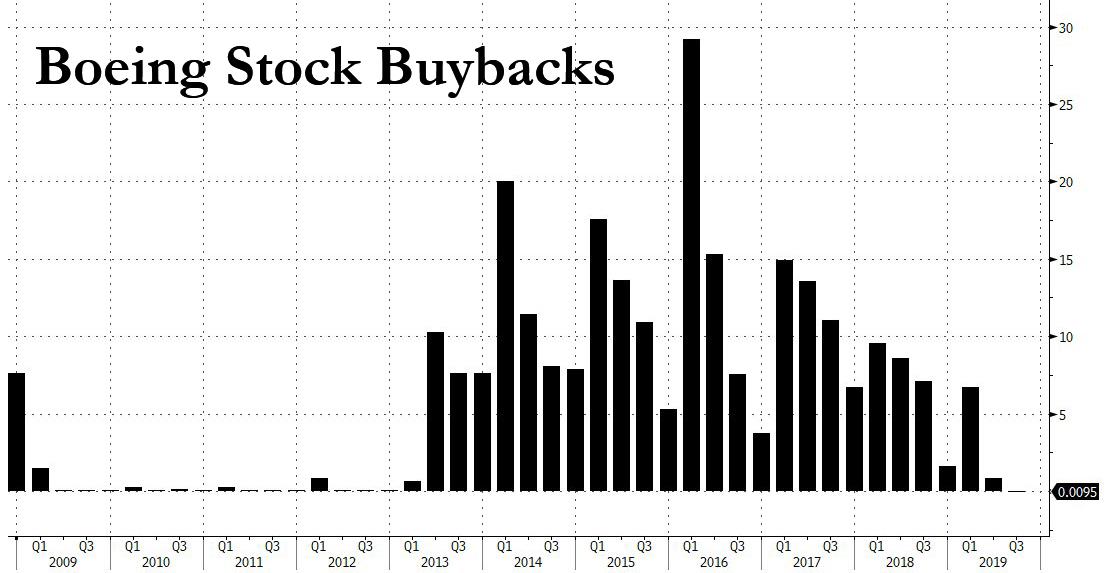In cahoots with government, Big Pharma is more concerned about profits than human health.
Drug companies see a potential bonanza by developing and marketing a COVID-19 vaccine once testing is completed — likely to be available later this year.
What everyone should know about vaccines and their hazards goes unreported.
All vaccines contain harmful toxins, including mercury, aluminum, formaldehyde, phenoxyethanol (antifreeze), and squalene adjuvants that weaken and can destroy the human immune system, making it vulnerable to many annoying to life-threatening illnesses.
The 1976 H1N1 swine flu vaccines caused hundreds of cases of Guillain-Barre syndrome (GBS), a serious neurological disease.
The 2009 H1N1 vaccine contained thimerosal as a preservative, a form of hazardous mercury, along with other toxins listed above.
The 1976 vaccine was especially hazardous. Johns Hopkins School of Public Health’s Institute for Vaccine Safety director Neal Halsey MD noted “a lot of deaths, many in otherwise healthy, normal children after being vaccinated.
Vaccines can be more hazardous than diseases they’re designed to protect against.
Of special concern is their potentially dangerous effect on young children and the elderly.
Information below is from earlier writing that’s edited and updated on vaccine hazards to human health.
Under the 1986 National Childhood Vaccine Injury Act, the VAERS (Vaccine Adverse Reporting System) was established.
Annually, it reports thousands of serious adverse vaccine reactions, including up to 200 deaths and many more permanent disabilities.
Far more alarming is the following:
- The FDA earlier estimated that only 1% of serious adverse reactions are reported, the CDC at the time estimating 10%.
- In earlier congressional testimony, medical school students said they were told not to report these incidents.
- International studies show vaccines cause up to 10,000 US SIDS (Sudden Infant Death Syndrome) deaths annually, at least half the number from vaccines.
- Another earlier study determined that 3,000 US children die annually from vaccines.
- Poor US reporting suggests that annual adverse vaccine reactions in the country number from 100,000 to one million.
- From 1988 to 2010, the government’s National Vaccine Injury Compensation Program (NVICP) paid families of adversely affected children $1.2 billion in damages.
As authorized by the 2006 Public Readiness and Emergency Preparedness (PREP) Act, US Health and Human Services (HHS) granted drug companies legal immunity (except for impossible to prove willful misconduct) to market hazardous H1N1 Swine Flu vaccines globally.
Vaccines are legally mandated in all 50 US states as part of mass immunizations of children.
In settling vaccine damage suits, drug companies impose gag orders to keep vital information concealed from the public.
Insurers refuse to cover adverse vaccine reactions because of high potential liability they’d face.
Vaccinations cause high numbers of severe reactions, permanent disabilities, and deaths as well as an enormous personal and public cost. Virtually none of this gets publicly reported.
Vaccines are less effective than claimed.
Medical literature documents significant numbers of vaccine failures for measles, mumps, smallpox, pertussis, polio and Hib-causing bacterial meningitis and pneumonia.
Evidence shows that vaccinations are an unreliable and dangerous way to prevent illness and disease.
Earlier low US disease rates were unrelated to vaccines.
From 1850 – 1940, well before mandatory vaccination programs, the British Association for the Advancement of Science reported a 90% decrease in childhood diseases due to improved sanitation and hygiene practices.
By 1945, US medical authorities noted a 95% drop in deaths from the leading childhood infectious diseases (diphtheria, pertussis, scarlet fever and measles), well before mass-immunizations began.
An earlier WHO report found that third world disease and mortality rates had no direct correlation with immunization programs, but closely relate to proper sanitation, personal hygiene and dietary practices.
No evidence links vaccines to infectious disease declines. Proper hygiene and healthy eating may be far more effective.
Vaccines don’t guarantee immunization against diseases they’re designed to protect against.
Although vaccines stimulate antibody production, no evidence suggests that alone assures immunity.
A 1950 British Medical Council-published study found no relationship between antibody count and disease incidence.
Natural immunization involves many bodily organs and systems. Artificially producing antibodies can’t achieve it.
Research also shows how squalene adjuvants harm the human immune system, making it susceptible to numerous illnesses and diseases ranging from very annoying to life threatening.
The “herd immunity” notion of mass-immunizations effectiveness is largely discredited.
Just the opposite is true as evidence shows that fully vaccinated populations have experienced epidemics numerous times in the past.
Vaccine effectiveness remains scientifically unproven because no double blind studies have been conducted to provide convincing evidence.
Recent and earlier disease outbreaks affected more vaccinated children than unvaccinated ones.
A one size fits all standard is troublesome. It lets newborns get the same dose as a five-year-old.
Dubious quality control practices are tolerated that produce what’s known as “Hot Lots” – associated with disproportionately high death and disability rates.
The FDA hasn’t acted preventatively against them. Vaccine lots are seldom recalled even when associated with severe adverse reactions.
They’re administered under the assumption that all recipients largely respond the same way, regardless of age, gender, race, ethnicity, genetic makeup, or other characteristics.
An earlier New England Journal of Medicine-reported study found that a significant number of Romanian children receiving polio vaccine contracted the disease.
Evidence linked the outbreak two antibiotic injections. One inoculation raised the polio risk eight-fold; two – nine shots, 27-fold, and 10 or more 182-fold.
New research may reveal other unknown hazards, but public safety won’t be addressed until government health officials act responsibly, report accurately, and adequately protect populations from vaccines they never should allow.
Many supposed vaccine truths proved false.
Claims about dangers of common childhood diseases are false.
CDC data show a 99.8% pertussis recovery rate during the 1992-94 period.
Many common childhood diseases are benign and self-limiting. They usually impart lifelong immunity, whereas vaccine-induced immunization (when achieved) is only temporary.
Most infectious diseases are treatable and can produce immunity against further outbreaks.
Childhood disease dangers are greatly exaggerated to scare parents into getting their children vaccinated with unsafe drugs.
Polio vaccinations can cause the disease.
In 1955, when the Salk vaccine was introduced, polio was considered the most serious post-war public health problem.
A year later, six New England states reported sharp rises, ranging from more than double in Vermont to a 642% increase in Massachusetts.
Other states also were badly impacted enough for Idaho and Utah to halt immunizations due to increased incidence and death rates.
In 1962 congressional testimony, Dr. Bernard Greenberg, Biostatistics Department head at the University of North Carolina, reported sharp polio increases from 1957 to 1959 and a Public Health Service whitewash that suppressed it.
In 1985, the CDC reported that 87% of US cases between 1973 and 1983 were caused by the vaccine. Later the agency admitted that vaccines caused nearly all imported cases.
Misdiagnosing, poor reporting, and cover-ups suggest that the actual number of vaccine-associated paralytic polio (VAPP) cases may be 10 to 100 times higher than numbers cited by the CDC.
In 1977, Jonas Salk admitted that mass inoculations caused most polio cases since 1961.
The Salk vaccine proved highly dangerous. Information about it was suppressed, and declines in the disease were well underway when mass-immunizations began.
In Europe, they occurred in countries that used, then rejected the vaccine, proving it was never needed in the first place.
It’s true as well about vaccines for other diseases.
Lack of an initial adverse reaction does not prove vaccines are safe.
Documented longterm health problems include arthritis, chronic headaches, rashes indicative of disease, non-healing skin lesions, seizures, autism, anemia, multiple sclerosis, ALS, cancer, and many others.
Ingredients common to all vaccines are at issue. Squalene adjuvants are a biological time bomb that can harm or destroy the human immune system.
Chemical ranking systems rate many vaccine ingredients among the most hazardous to human health substances, even in microscopic doses.
Earlier epidemiological research by Dr. Bart Classen found that vaccines cause 79% of insulin type I diabetes cases in children under 10.
The sharp rise in numerous other diseases may also be linked to mass-immunizations.
California’s autism rate skyrocketed 1,000% from around 1990 – 2010.
In the 1990s, MMR vaccine usage in Britain (for measles, mumps and rubella) occurred at the same time autism rose sharply.
The January 2000 Journal of Adverse Drug Reactions reported that no adequate testing was done, so the vaccine never should have been licensed.
According to the Autism Society, the disease “is a complex developmental disability that typically appears during the first three years of life and is the result of a neurological disorder that affects the normal functioning of the brain…”
According to the CDC and National Vaccine Information Center, one in every 150 US children develop the disease.
Tens of millions are affected worldwide, making it more common than pediatric cancer, incurable type 1 (juvenile-onset) diabetes and AIDS combined.
In the early 1940s, prior to mass immunizations, autism was so rare that few doctors ever encountered it. Today it’s a global pandemic.
Longterm adverse vaccination reactions have been suppressed and ignored in spite of the alarming correlation between their use and the rise of autoimmune and other diseases.
Vaccines are more about profits than disease protection. Avoiding them is essential to protecting human health and well-being.
Claims that vaccines are key to preventing diseases are false.
During the 1849 US cholera outbreak, homeopathic hospitals documented a 3% death rate compared to 48 – 60% in conventional medical facilities.
More recent epidemiological studies show homeopathic remedies are superior to vaccines in preventing diseases.
They’re safe, effective, and free from toxic side effects — yet most often not covered by insurers.
Alternative treatments and remedies have been safe and effective for generations. Yet the medical establishment and governments spurn them.
Although all US states require vaccinations, laws vary by state. Legal exemptions exist.
They’re allowed for persons susceptible to adverse reactions, religious and other reasons.
The US and other governments prioritize corporate interests over public health and welfare.
Vaccination history shows documented evidence of government deception about vaccines — promoting their dubious effectiveness while ignoring their hazards.
The US FDA, HHS and CDC are stacked with corporate officials who return to high-paying industry jobs provided they place profit considerations over public health and safety.
In November 2000, concern over the above and adverse vaccine reactions got the American Association of Physicians and Surgeons (AAPS) to pass a unanimous resolution that called for a moratorium on mandatory childhood vaccinations and for doctors to insist on “truly informed consent for (their) use…”
In October 1999, Dr. Bart Classen, founder and CEO of Classen Immunotherapies, told Congress:
“It is clear…that the government’s immunization policies are driven by politics and not by science.”
“I can give numerous examples where employees of the US Public Health Service…appear to be furthering their careers by acting as propaganda officers to support political agendas.”
“In one case…employees of a foreign government, who were funded and working closely with the US Public Health Service, submitted false data to a major medical journal.”
“The true data indicated the vaccine (in question) was dangerous. However, the false data” indicated no risk.
“Four letters from the FDA/Public Health Service…clearly reveal(ed) that the anthrax vaccine” approved for US military personnel was done “without the manufacturer performing a single controlled clinical trial.”
They’re essential to determine safety and effectiveness. Failure to conduct them proved devastating to the health and well-being of recipients.
US military forces receive many or all of the following vaccinations:
- Three shots for hepatitis B
- Two for hepatitis A
- Annual influenza shots
All US military personnel must have documented proof of receiving vaccines for measles, mumps, rubella, varicella (chicken pox), and polio.
Smallpox vaccines are administered every ten years to career military personnel — the same procedure followed for tetanus-diphtheria, pertussis, typhoid, and at times for yellow fever.
Multiple doses are given for anthrax and rabies. Service personnel are screened for and given shots for tuberculosis and various other diseases, depending on where in the world they’re deployed.
Multiple vaccinations for all US military personnel practically assures damage to their immune systems, risking severe health problems later in life.
A healthy diet, plenty of water daily, no smoking and little or no alcohol consumption, daily exercise, proper sanitation and personal hygiene practices, natural substances like vitamin C and D, natural herbal remedies, and other good health practices are far more effective in preventing diseases than vaccines.
A Final Comment
Viera Scheibner is a highly respected scientist, researcher, and vaccine expert.
Earlier she called “vaccinators the snake oil salesmen of our time,” adding:
The vaccine industrial complex is “an illness industry (that) causes a pandemic (of) degenerative diseases (and) behavioral problems.”
“Ever since the turn of the (last) century, medical journals published dozens and dozens of articles demonstrating that injecting vaccines (can) cause anaphylaxis, meaning harmful, inappropriate immunological responses, which is also called sensitization.”
“(This) increase(s) susceptibility to the disease which the vaccine is supposed to prevent, and to a host of related and other unrelated infections.”
“We see it in vaccinated children within days (or) two or three weeks.”
Most adversely affected children “develop runny noses, ear infections, pneumonitis, (and) bronchiolitis.”
“It is only a matter of degrees, which indicates immuno-suppression, (not immunity).”
“So I never use the word immunization because that is false advertising. It implies that vaccines immunize, which they don’t. The correct term is either vaccination or sensitization.”
“Vaccines (can also) damage internal organs, particularly the pancreas.”
Everyone vaccinated, including for seasonal flu, is vulnerable to contracting severe “autoimmune diseases like diabetes,” Addison’s disease, arthritis, asthma, Guillian-Barre Syndrome, hepatitis, Lou Gehrig’s disease, lupus, multiple sclerosis, osteoporosis, polio, and many other health problems.
Some kill. Others cause lifetime disability and pain. It’s because autoimmune diseases happen when the “body attacks itself.”
More accurately, it’s attacked by unhealthy living, stress, and harmful ingested substances.
All of the above information bears testimony to why COVID-19 vaccines should be shunned when available.
And make no mistake, they’re coming with lots of deceptive fanfare. Ignore it.
*
Note to readers: please click the share buttons below. Forward this article to your email lists. Crosspost on your blog site, internet forums. etc.
Award-winning author Stephen Lendman lives in Chicago. He can be reached at [email protected]. He is a Research Associate of the Centre for Research on Globalization (CRG)
His new book as editor and contributor is titled “Flashpoint in Ukraine: US Drive for Hegemony Risks WW III.”
http://www.claritypress.com/LendmanIII.html
Visit his blog site at sjlendman.blogspot.com.

